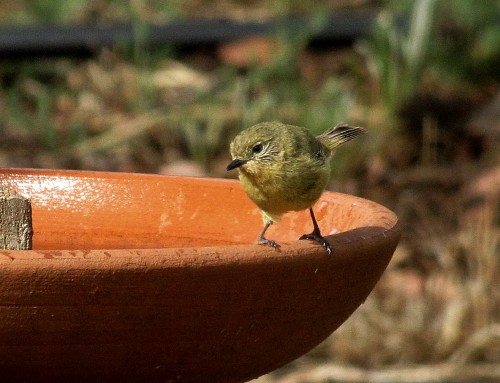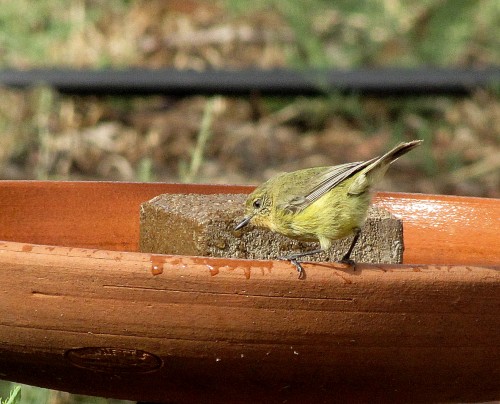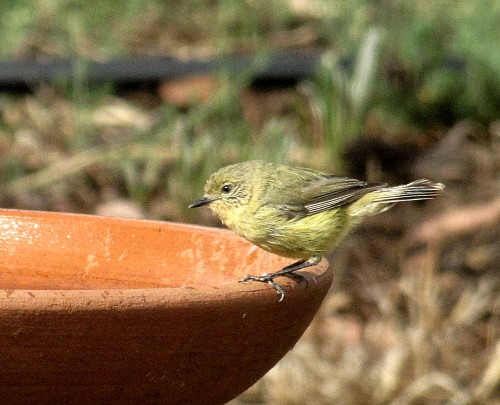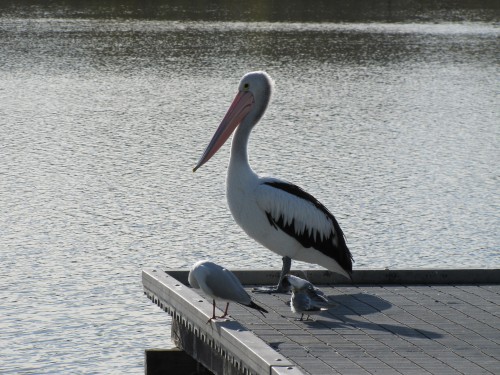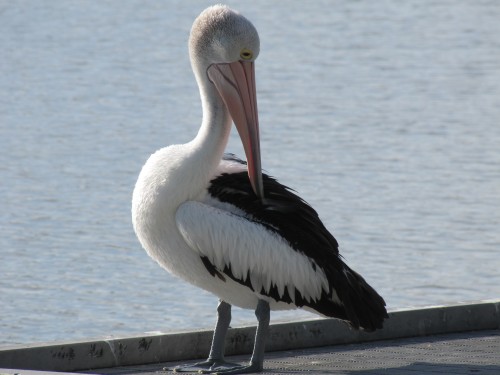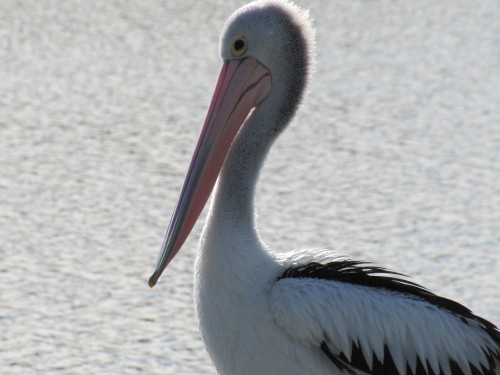Bird photography
Photos on this site
I must admit that this site would be much poorer and quite uninteresting for readers without the photos I include with most of my posts. The vast majority of the articles I post here are illustrated by at least one photo; sometimes as many as 4 or 5. In fact, the photos I take are usually the reason for posting an article, that is, the words result from the photos taken.
Early photographic attempts
In my early years of birding I bought a cheap SLR camera which took reasonable scenery photos, all in 35mm slide format. This was in the pre-digital era, the 1980s. I also invested in a telephoto lens in order to take bird and wildlife photos, along with a cumbersome tripod. The results were mixed – many taken with the telephoto lens were poor and mostly unusable here. (As an aside, my son has recently completed scanning all of these early slides into digital format. I plan to use the best of them on this site later in the year.)
First digital camera
In the late 1990s I acquired my first digital camera, a very basic Kodak point and shoot. It gave me a renewed enthusiasm for photography. I can’t remember much about the details of this camera, but a little research found the user’s manual to the Kodak Easyshare CX4200 digital camera which was a 2megapixel point and shoot. It only had a 2x digital zoom, virtually useless for bird photography.
Canon SX2 IS
In 2005 I was preparing to go trekking in Nepal. I upgraded to a Canon Powershot SX2 IS. This was a huge jump forward because now I had 12x optical zoom and 5megapixals to play with. It was lightweight, easy to use and took some fabulous photos of the Himalayas. It also opened up many possibilities for bird and wildlife photography. It was about then that this bird site commenced.
Canon SX20 IS
In 2011 my wife and I were preparing for another overseas holiday, this time in Ethiopia, Morocco and Spain. While the main purpose was to visit our daughter who was teaching in Ethiopia, it was also highly focussed on doing the tourist thing. Bird photography was not the main aim; any birds seen and photographed along the way was an incidental bonus.
Well before the trip I upgraded to a Canon SX20 IS and my wife took over the SX2. Between us we managed about 8000 photos in six weeks, including some great bird shots. The 20x optical (plus 4x digital making it effectively 80x) zoom on my new camera gave me so much more flexibility and is proving its worth almost every day while taking photos in our garden, and around our district. I am planning several more major caravanning trips this year, and these will always be where I can get more bird photos.
And as an added bonus, the camera is perfect for taking great shots of my two grandchildren, age 4 and 17 months.
An excellent article
Yesterday I came across an excellent article on using point and shoot cameras for bird photography. Interestingly, the author also uses the Canon SX50 which has a great 50x zoom. Mmm.. I wonder if my wallet can stand another assault? I almost feel the need to upgrade. You can read the article Birding with a point and shoot camera here.
Further reading:
- How to be a birder part 14 – part of a series I wrote some years ago
- How to be a birder – index of the whole series
- I have a new camera – first impressions of the Canon SX20
Little Thornbills take a bath
We have many different birds resident or visiting in our garden and adjacent mallee scrub. We have quite a few thornbills, species which are always a challenge to identify. Many of them are little brown birds which move quickly and are hard to hold in focus for long with binoculars. Most are even harder to focus on with a camera.
I have over the years managed reasonable photos of the common Yellow-rumped Thornbill. I have fewer good photos of the occasional visiting Chestnut-rumped Thornbills. And until earlier this week I had no photos of the elusive Little Thornbill which is also called the Yellow Thornbill. This species is commonly heard and seen in our garden and nearby, but never have I managed to capture one with my camera.
Earlier this week a loose flock of about 6 of this lovely species came to one of our bird baths. they flitted in and out of the water, zipping to branches high above to preen before diving down to the water ago. I had to be very patient with my camera, making sure it was focussed on the edge of the bird bath in anticipation before snapping them. I was pleased to manage three reasonable shots.
Further reading:
Australian Pelican at Sturt Reserve
A few days ago I took some time out of my busy schedule and drove down to Sturt Reserve near the centre of town. I had a reason to take my camera with on this occasion which was just as well because I saw and photographed quite an interesting range of our local birds.
This Australian Pelican posed or me on the end of a small jetty near the reserve. With the mid-morning sun coming from behind it gives an interesting effect.
A parrot flyover
It is my habit to go for a walk every day. In reality, it is a habit more on the wish-list than in reality. I need to do it for general fitness, well being and just plain sanity. Sitting at a keyboard writing all day is not the smooth path to a healthy life. But I try.
A wonderful bonus to getting out for a walk is seeing numerous birds as I walk. Sometimes I even take some note paper with and jot down what I see. Very rarely do I take a camera with me which is a pity. I’ve missed some wonderful photos that way.
Take this evening, for example. The call of the locally common Red-rumped Parrot is quite distinctive. I heard them coming. Lots of them. Next thing about 30 flew low overhead, some of them alighting in the top branches of nearby tree in full, late afternoon sunlight. Would have made a lovely photo. Never mind; some other day – perhaps.
In the meantime, my readers will have to make do with two photos I prepared earlier.
Some fellow writers and a Scarlet Robin
Today I attended the meeting of a writers’ group to which I belong. It was held in the home of a fellow writer who lives in Gawler, about an hour north of Adelaide and just over an hour’s drive from my home. It was an inspiring time hearing about the projects of my colleagues and the discussion lasted several hours – until the lunch food beckoned. The talk still continued over the meal.
On my way home I decided to do an hour of birding in Hale Conservation Park, just a few kilometres from Williamstown in the Adelaide Hills. It had been a few years since I’d walked through parts of the park. Despite the welcome sunshine, birdlife was a little slow. A few birds were calling but I didn’t see much. Eventually, just as I was about to turn back towards the car park, I saw a group of honeyeaters feeding in several trees near the path. They were Eastern Spinebills, New Holland Honeyeaters and Yellow-faced Honeyeaters. Most didn’t sit still long enough to focus my camera on them, though I did manage a few shots of the Yellow-faced.
As I was following them around, a male Scarlet Robin came and perched on a branch less than two metres from me. I had about three seconds to zoom, focus and press the shutter. The bird was gone just as quickly as it had come; I didn’t see it again. I’m so thankful that I managed to get it more or less in focus.
Sometimes you just get lucky!
Good birding.
Further Reading:

